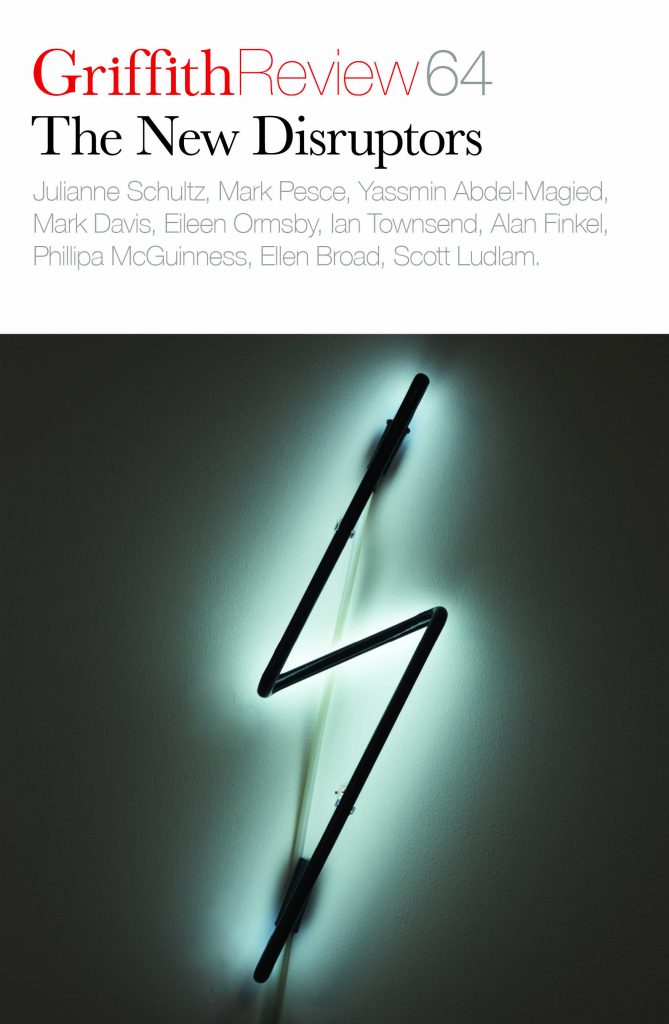Featured in

- Published 20190507
- ISBN: 9781925773620
- Extent: 264pp
- Paperback (234 x 153mm), eBook

Already a subscriber? Sign in here
If you are an educator or student wishing to access content for study purposes please contact us at griffithreview@griffith.edu.au
Share article
About the author

Margaret Gibson
Margaret Gibson is a cultural sociologist and academic at Griffith University. Her books include Objects of the Dead: Mourning and Memory in Everyday Life...
More from this edition

Salvaged fragment from the recorded small morning hours rage of the vampire
of Silicon Valley 12
Poetry[ ]woe to tetravalent metalloids and over eager semiconductors! Beards of purest silicon, skulls of purest silicon! Hunchbacked high-octane...

The hydrogen economy
EssayBEFORE THERE WAS Matt Damon in the film adaptation of The Martian, there was Cyrus Harding in Jules Verne’s novel The Mysterious Island: a...

Guarding the gatekeepers
Essay WARS OFTEN RAGE behind the estimated ten million Wikipedia pages: edit wars, where editors repeatedly override each other’s contributions to a page and cannot...